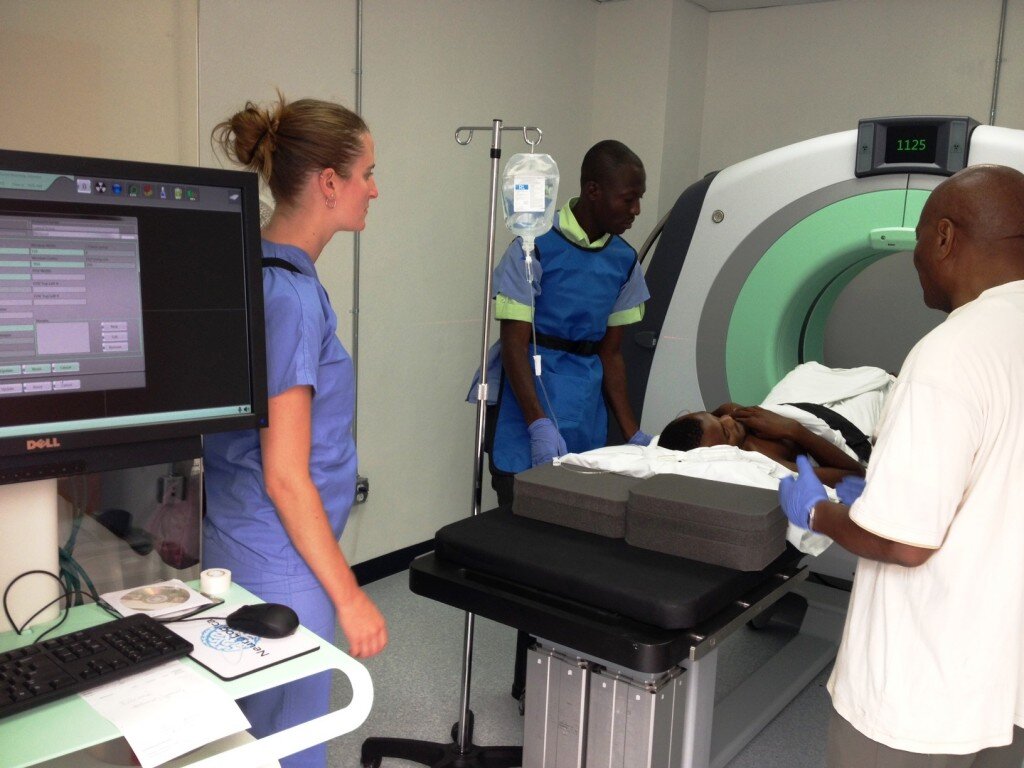The University Hospital of Mirebalais: The Back Story
Aerial view of HUM, Jan. 2014, courtesy of Rebecca Rollins, Partners In Health.
Presented to the Partners in Health Board of Trustees
(Following photos courtesy of Build Health International)
I am here to add the back story to how this magnificent hospital was built, because I have heard about nearly block and pipe that went into it!
You probably know all about its genesis: how it was originally intended to be a 110-bed community hospital… but the decimation of the General Hospital in Port-au-Prince in the earthquake led the Government of Haiti and PIH to declare Mirebalais as the site of a new National Teaching Hospital.
Before the hospital…
It would become a state-of-the-art facility to train Haitian doctors, nurses, and allied health professionals (viewed in this video, communicating the current state of professional training at the University Hospital), a place sophisticated enough to keep Haitian professionals in Haiti; whereas over past years 80% of them had left the country in despair over poor health care infrastructure. The 300-bed hospital would be a stunning example of a private-public partnership: with construction fully financed by philanthropy, and operations managed and funded by PIH, Zanmi Lasante and the Haitian Ministry of Health.
Jim’s first few months after the earthquake were spent in Port au Prince assisting David Walton and other PIH staff in saving lives. When he finally focused on the building site 7 acres of rice paddies had to be raised 10 feet. A Dominican contractor was hired and heavy equipment chugged over the border from the DR. (Haitian contractors neither had sufficient equipment or expertise for the largest public works project in Haiti.)
In September of 2010 I traveled for the first time to Haiti with staff and donors from the Haiti Fund at the Boston Foundation. Our van circled the dirt rotary in “downtown” Mirebalais. We dipped down a concrete ramp into the waters of the Artibonite River, churning with families bathing, collecting water and washing clothes, and then climbed the other bank lined with meat stands and motorbikes.
Passing brightly painted houses along the rocky road through town, we eventually discovered the construction site. What a scene it was: emerald green rice paddies dotted with oxen, water birds, and peasants; fringed in the distance by mauve mountains and topped by an exquisite sherbet-colored sunset. In the middle was a 14-acre plain of dirt, and one concrete block – the cornerstone — that had been laid within it. Jim was in Boston, but it was an emotional moment for me as I met his Dominican counterpart reviewing drawings under a lone shade tree.
Wham! One month later, cholera exploded in Mirebalais and in St. Marc, a large community downstream. In fact, as it turns out, cholera-laden human waste from a UN peacekeeping base had been leaked via latrines into the river a month after we crossed it. Jim’s calls home in late October were all about cholera tents, disinfectants, droves of sick people, and the redeployment of his partner David Walton and other PIH personnel to attend to this latest catastrophe. The crisis continues, having claimed nearly 8,000 lives, and infected more than 700,000 all over Haiti.
The work on the hospital proceeded in fits and starts. The contested Presidential election from November 2010 through February 2011 created considerable civil unrest in Mirebalais, and the job had to be stopped on numerous occasions. But by the end of February concrete block and cement mixers were barreling over the mountains from the DR and walls were being mortared. (Haitian block was too weak to use because Haitian building and block-making codes had never been enforced.) All too often, tires on machinery went flat and fuel ran out threatening to stall drums filled with wet cement.
Haitians from the community were eager for jobs and over time hundreds of local Haitians were hired. Already skilled Haitian masons learned to build with metal rebar to reinforce walls. As they went up, Jim reached out to his contacts in the Carpenters, Tile Layers, Plumbers and Electrical Unions in Boston. Over the next 18 months, nearly 200 American union tradespeople volunteered in Mirebalais. Many had never before owned a passport. For some it took courage to go to such a strange place. But this was their philanthropy: giving their time, their hard-earned skills, and their sweat equity to bring dignity and health care to Haitians. With thick Boston accents, they worked hand-in-hand with Kreyol-speaking trainees, leaving behind not only bricks and mortar, but proficient and proud Haitian construction workers. At least one Haitian man named his new son after an American volunteer.
There were so many gifts: the 340 recycled doors retrofitted by union carpenter apprentices; scores of church pews refinished and shipped by St. Cecilia’s Parish in Boston; every inch of millwork donated by a company owned by our children’s godparents; plumbing, medical gas, and AC supplies from John Cannistraro’s plumbing company; electrical supplies from Hubbell and other companies in the industry; extraordinary $2.5 million dollar donations of radiology and diagnostic equipment from General Electric; mosaics designed by an American artist Paul had met on a plane, who trained 5 local farmers to create them on walls throughout the hospital. Now those farmers have a thriving collaborative installing mosaic art throughout Haiti!
All in all, these in-kind contributions enabled a 240,000-square-foot complex to be built for a mere $17 million. In contrast the Governments of France and the US are still attempting to RE-build the General Hospital in Port au Prince at an estimated cost of $85 million.
Solar panels on the hospital.
Solar panels added an additional $1.7 million to the project. They were icing on the cake, garnering worldwide attention and visits from Presidents Clinton and Martelly to one of the few solar-powered hospitals in the Western Hemisphere.
The next time I visited Mirebalais with a group from the Haiti Fund, we simply couldn’t believe the scale of the project, the interplay of walls and sunlight, or the sophisticated septic treatment system, one of only two operable in the country at the time. Seeing the blue solar panels stretching on white roofs as far as the eye could see, a philanthropic advisor and friend of mine, who had recommended funding them, broke into tears. (Well, so did I.)
On every Haiti Fund trip, including the one we will make this upcoming July, we visit the University Hospital of Mirebalais to show that successful systemic change, innovation, and large-scale private-public partnerships are possible in Haiti. With so much foreign aid wasted on new housing that still remains vacant; with so much aid spent on foreign contractors who don’t build local skills; the University Hospital of Mirebalais is a rare example of how private philanthropy and a spirit of partnership can strengthen a government system, fuel the local economy, and convince foreign donors to fund the public sector. The Haiti Reconstruction Fund – a pooled fund of foreign aid for Haiti – eventually made a grant of $8 million to operate the hospital.
Paul Farmer, Dr. David Walton and my two daughters at the opening of the Hospital.
Last April our twin 16-year-old daughters, Mari and Ali, accompanied us to the hospital’s opening. What a flawlessly planned event that was! I couldn’t have been more proud of Jim, of David Walton, and of every member of the PIH team in Boston and Haiti. But I was also proud of our daughters. They hadn’t understood why their father had spent most of the past three years consumed by Haiti. Yet, half-way through the opening, they themselves were proudly giving tours to visitors.
The first CT scan done at the hospital.
Three months ago, I visited the hospital once again with another group of philanthropists. This time I saw an immaculate, calm, orderly hospital brimming with patients; surgery underway; babies in incubators; pregnant women waiting for visits. Tears again. We were all astounded by the hundreds of patients who had slept overnight on the sidewalks, waiting to be enrolled at 6:30 am. It was the same day that Bill and Melinda Gates visited, and we later heard that some staff mistook us for them!
Last month, Ali’s teacher gave me a paper Ali had written about her “Most Memorable Place.” She concluded:
“Traveling to Haiti last year to see my father’s hospital was a remarkable trip; the food, the people, and the poverty are all etched in my mind forever…a life changing experience… There is so much still needed. I am looking forward to someday going back and contributing what I can to the Haitian people. Maybe I cannot build a massive hospital, but I am eager to help in my own way.”
And that is what I want to share with you today. So much sweat, so much love, so much generosity from people from all walks of life has gone into building this shining hope for the people Haiti. Now that Haiti’s best and brightest healers are being trained there, I hope we will each consider how we can help… in our own way.










